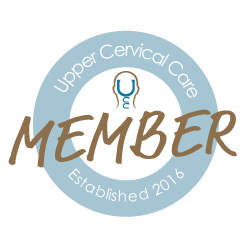Trigeminal neuralgia (TN) is one of the most excruciatingly painful conditions affecting the nervous system, often described as one of the worst pains known to humankind. Characterized by sharp, shooting pain that usually affects the face, trigeminal neuralgia can severely impact a person’s quality of life. While conventional treatments often focus on medications and surgical procedures, an increasing number of people are turning to alternative therapies, such as chiropractic care, to manage or even alleviate the pain associated with TN.
At Anatomy Chiropractic, we understand the complexities of this debilitating condition and are committed to helping individuals find effective solutions to trigeminal neuralgia pain relief. In this post, we will explore what trigeminal neuralgia is, the traditional treatment options, and how upper cervical chiropractic care can offer significant relief to those suffering from this condition.
What is Trigeminal Neuralgia?
Trigeminal neuralgia is a disorder of the trigeminal nerve, which is responsible for sensation in the face. This nerve is divided into three branches: the ophthalmic (forehead), maxillary (cheek), and mandibular (jaw) branches. The pain associated with TN typically occurs in one or more of these areas, and can be triggered by routine activities such as brushing teeth, chewing, talking, or even feeling a breeze on the face.
The pain is often described as a sharp, stabbing, electric shock-like sensation that lasts for a few seconds to a minute. These episodes can occur in rapid succession or with long periods of remission in between. While TN is typically unilateral (affecting one side of the face), in some cases, both sides may be affected. The intensity and frequency of the pain can vary greatly, and it often becomes progressively worse over time if left untreated.
Traditional Treatments for Trigeminal Neuralgia
The traditional approach to managing trigeminal neuralgia involves a combination of medications and, in some cases, surgical interventions.
- Medications: The first line of treatment usually involves anticonvulsant medications such as carbamazepine, gabapentin, or oxcarbazepine. These drugs work by stabilizing nerve activity and reducing the intensity of the pain. While these medications can be effective for managing pain, they may also come with a range of side effects, including drowsiness, dizziness, and cognitive impairment.
- Surgical Treatments: If medications are ineffective or cause intolerable side effects, surgical options may be considered. These include:
- Microvascular Decompression: A procedure where blood vessels pressing on the trigeminal nerve are moved or removed.
- Gamma Knife Radiosurgery: A non-invasive procedure that uses focused radiation to target and damage the trigeminal nerve, which may reduce pain transmission.
- Trigeminal Rhizotomy: A procedure that involves cutting or damaging the trigeminal nerve to block pain signals.
While these treatments can be effective, they often come with risks and complications, and they do not address the underlying structural or functional issues that may be contributing to the condition.
How Upper Cervical Chiropractic Care Can Help With Trigeminal Neuralgia Pain Relief
Chiropractic care focuses on the diagnosis and treatment of musculoskeletal disorders, with particular emphasis on the spine and nervous system. The philosophy behind chiropractic care is that misalignments (also known as subluxations) in the spine and nervous system can lead to a variety of health problems, including nerve-related conditions like trigeminal neuralgia.
Here are several ways upper cervical chiropractic care can offer trigeminal neuralgia pain relief:
1. Spinal Adjustments to Relieve Nerve Compression
One of the primary goals of chiropractic care is to correct misalignments of the spine, particularly in the cervical (neck) region. Misalignments in the upper cervical spine can place pressure on the spinal cord or the nerves that branch off it, which may contribute to nerve irritation and pain. By performing spinal adjustments, chiropractors can restore proper alignment to the spine, reduce pressure on the nerves, and improve the overall function of the nervous system.
In the case of trigeminal neuralgia, chiropractic adjustments may help relieve compression on the trigeminal nerve, which could be exacerbated by spinal misalignments. This can lead to a reduction in pain and other symptoms associated with the condition.
2. Reducing Inflammation and Muscle Tension
Chronic pain, such as that associated with trigeminal neuralgia, often leads to muscle tension and inflammation around the affected area. Chiropractic care can help reduce these issues through targeted spinal adjustments and soft tissue techniques. For example, chiropractors may use myofascial release, massage, or trigger point therapy to alleviate muscle spasms and tightness in the neck and facial muscles. These techniques help reduce inflammation and promote blood flow to the affected area, supporting the body’s natural healing processes.
3. Improving Blood Flow and Nerve Function
One of the key benefits of chiropractic care is its ability to enhance circulation and nerve function. Misalignments in the spine can impede the flow of blood to various parts of the body, including the head and face. By correcting these misalignments, chiropractors can help restore optimal blood flow, which is essential for nerve function and overall healing.
Additionally, chiropractic care promotes the health and function of the autonomic nervous system, which plays a crucial role in regulating the body’s pain response. By improving nervous system function, chiropractic adjustments can help reduce the frequency and severity of trigeminal neuralgia attacks.
4. Addressing Underlying Structural Imbalances
In some cases, trigeminal neuralgia may be related to structural imbalances in the head, neck, or spine. These imbalances can contribute to nerve irritation or compression, which can trigger pain. Chiropractic care aims to identify and address these imbalances, which may include problems such as poor posture, muscle weakness, or joint dysfunction. By addressing these issues, chiropractors can help reduce the risk of TN flare-ups and improve long-term pain management.
5. Holistic, Non-Invasive Approach
Unlike medications and surgical treatments, chiropractic care offers a holistic, non-invasive alternative for managing trigeminal neuralgia. Chiropractors take a patient-centered approach, considering the whole person rather than just focusing on the symptoms. This approach helps promote overall health and wellness, which can play a vital role in managing chronic conditions like TN. Additionally, chiropractic care does not carry the same risk of side effects or complications that can occur with medications or surgeries.
Combining Chiropractic Care with Other Pain Relief Procedures
While chiropractic care can be highly effective in managing trigeminal neuralgia pain, it is often most successful when combined with other complementary therapies. For instance, physical therapy, acupuncture, and mindfulness-based stress reduction techniques such as meditation or yoga can be integrated into a comprehensive pain management plan. A holistic approach to care may help you achieve more sustainable relief from the intense pain associated with trigeminal neuralgia.
A Path to Trigeminal Neuralgia Pain Relief
Living with trigeminal neuralgia can be an overwhelming experience, and finding effective pain relief is often a matter of trial and error. While conventional treatments like medications and surgeries have their place, many individuals are now seeking alternative methods to help manage their pain and improve their quality of life.
Chiropractic care offers a safe, non-invasive, and effective approach to trigeminal neuralgia pain relief. By addressing spinal misalignments, reducing inflammation, improving nerve function, and supporting overall health, chiropractic adjustments can help alleviate the debilitating symptoms of TN.
If you’re struggling with trigeminal neuralgia, don’t hesitate to contact Anatomy Chiropractic to explore how chiropractic care can help you regain control over your life and reduce your pain.
Take the first step toward finding relief. Schedule a consultation, and let us help you find a path to better health and pain-free living.


